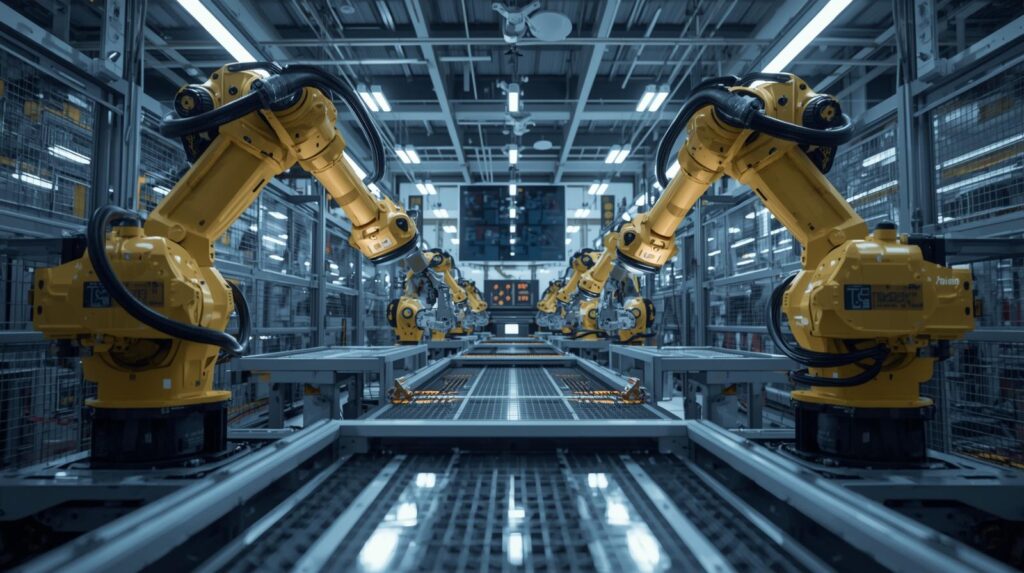Machine safety has become an essential pillar of industrial operations, driven by the growing adoption of automation, robotics, and advanced manufacturing technologies. As industries embrace smart factories and Industry 4.0 practices, the importance of protecting workers, equipment, and data from hazards is greater than ever. The machine safety market is evolving rapidly, with new technologies not only ensuring compliance with safety standards but also enhancing productivity and operational efficiency. Several key technological trends are now shaping the future of machine safety, paving the way for safer, smarter, and more connected industrial environments.
Download PDF Brochure @ https://www.marketsandmarkets.com/pdfdownloadNew.asp?id=1188

Integration of IoT and Smart Sensors
The rise of the Industrial Internet of Things (IIoT) has revolutionized how machine safety systems operate. Smart sensors embedded in equipment continuously monitor parameters such as temperature, vibration, and pressure, detecting anomalies in real time. These sensors are capable of triggering automated shutdowns, alarms, or alerts to prevent accidents. By integrating IoT, industries can move from reactive safety measures to predictive approaches, reducing downtime and preventing costly failures before they occur.
Adoption of Artificial Intelligence and Machine Learning
Artificial intelligence (AI) and machine learning (ML) are playing an increasingly important role in machine safety. These technologies analyze large volumes of operational data to identify patterns and predict potential hazards. For example, AI-enabled safety systems can predict when a machine part is likely to fail, allowing for proactive maintenance and avoiding safety risks. ML algorithms are also being used to improve decision-making during emergencies, ensuring faster and more accurate responses that minimize harm.
Collaborative Robots and Safety Systems
The use of collaborative robots, or cobots, is becoming widespread in manufacturing and logistics. Unlike traditional industrial robots, cobots are designed to work alongside humans in shared workspaces. Advanced safety features such as force and torque sensors, vision systems, and automated stopping mechanisms ensure that cobots can operate without posing risks to human workers. As cobot adoption grows, the development of robust safety technologies tailored to human-robot interaction is becoming a crucial trend in the machine safety landscape.
Cloud-Based Safety Management Systems
Cloud technology is transforming machine safety by centralizing data collection, analysis, and reporting. Cloud-based safety management platforms provide real-time visibility into safety performance across multiple sites, enabling companies to standardize protocols and ensure compliance with regulations. These systems also make it easier to conduct audits, manage incident reports, and implement corrective actions quickly. With the scalability and accessibility of cloud platforms, industries can adopt more agile and cost-effective approaches to managing machine safety.
Advancements in Safety Controllers and PLCs
Programmable logic controllers (PLCs) and safety controllers are at the core of modern machine safety systems. Recent advancements have led to more compact, powerful, and network-enabled devices capable of handling complex safety functions. These controllers integrate seamlessly with other automation systems, allowing for better synchronization of safety and production processes. The shift towards modular and programmable safety solutions is enabling manufacturers to design flexible systems that can adapt to changing operational needs.
Augmented Reality for Safety Training and Maintenance
Augmented reality (AR) is emerging as a valuable tool for enhancing safety training and equipment maintenance. By overlaying digital instructions onto real-world equipment, AR can guide workers through safe operating procedures or highlight potential hazards during maintenance tasks. AR-based training also allows employees to practice emergency scenarios in a simulated environment, improving preparedness without exposing them to actual risks. This trend not only enhances safety but also boosts workforce competency and confidence.
Emphasis on Cybersecurity in Machine Safety
As machines become more connected, cybersecurity is becoming a critical aspect of safety. Cyberattacks on industrial control systems can lead to equipment malfunctions, data breaches, and safety incidents. To address this, manufacturers are integrating cybersecurity measures directly into machine safety systems. Multi-layered security architectures, encryption, and intrusion detection are being adopted to protect against threats. Ensuring both physical and digital safety is now a priority as industrial environments evolve into cyber-physical systems.
Shift Toward Predictive and Preventive Safety
Traditional safety systems have been largely reactive, responding only after hazards occur. The future of machine safety lies in predictive and preventive approaches. Leveraging predictive analytics, AI, and connected devices, industries can forecast potential risks and mitigate them proactively. Preventive safety strategies also focus on continuous monitoring, ensuring that machines remain within safe operating parameters at all times. This proactive shift reduces accidents, enhances uptime, and aligns with the broader goals of smart manufacturing.
See Related Semiconductor Reports:
Machine Condition Monitoring Market Size, Share, Growth and Trends Analysis Report by Technique (Vibration Monitoring, Thermography, Oil Analysis, Ultrasound Emission), Offering (Vibration Sensors, Infrared Sensors, Spectrometers, Corrosion Probes, Spectrum Analyzers), Region – Global Forecast to 2029
Testing, Inspection, and Certification (TIC) Market by Service Type (Testing, Inspection, Certification), Source (In-house, Outsourced), Application (Consumer Goods & Retail, Agriculture & Food, Chemical, Energy & Power) – Global Forecast to 2030